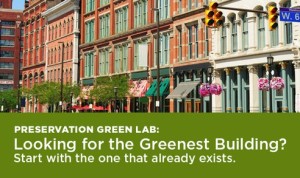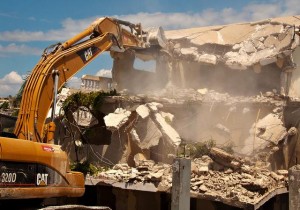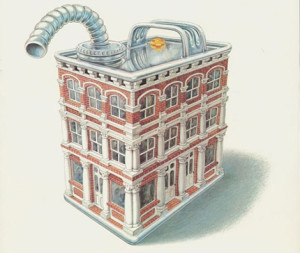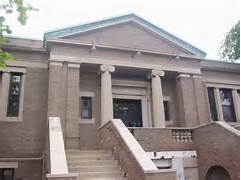
Welcome to the
Healy Project
Join us on Facebook
Send us an Email
Learn from the Past, Learn from the Present

On this day that celebrates Planet Earth, residents of our beautiful planet are urged to conserve dwindling resources by recycling everything from plastic bottles to buildings. The “Zero Waste” initiative of the City of Minneapolis similarly encourages citizens to conserve resources:
“Zero Heroes strive to have Zero Waste. They do this by working to first prevent waste, and then by recycling all they can of the waste that remains. To lower this amount of waste we need to take a step beyond recycling: waste prevention. Waste prevention is reducing the amount of waste and the toxicity of waste. Waste prevention saves natural resources, energy, and may even save you money.” City of Minneapolis Web Site

Minneapolis, the Zero Waste city, wants us to recycle and ride bikes–while the City sends hundreds of tons of historic house to the landfill.
However, while the City Solid Waste and Recycling Department is urging citizens to compost and recycle bottles and papers, the City Planning department has been facilitating the demolition of an historic house–which will send 180+ tons of materials to the landfill. This disconnect between saying and doing shows a gobsmacking hypocrisy: Citizens recycle while the City cancels out their efforts by a thousandfold in the demolition of one house.
“The facts are in – no matter how much green technology is employed, any new building represents a new impact on the environment.It makes no sense for us to recycle newspapers, bottles, and cans while we’re throwing away entire buildings and neighborhoods.It’s fiscally irresponsible and entirely unsustainable.”Jerri Hollan, FAIA
“Zero Waste” makes zero sense when the City shows blatant contempt for the most important piece of sustainability–recycling existing buildings. City Planning sent staffer John Smoley to the HPC twice to argue for its “save only the best buildings in the best neighborhoods” policy–and twice, after vigorous debate, the HPC affirmed that that the Orth House, 2320 Colfax Ave. S. is historic and should be placed under interim protection while a designation study is completed. But when the owner’s appeal to demolish was heard before the City Zoning and Planning, CM Lisa Bender, taking the unsupported testimony of the appellants as fact, declared that no viable alternatives existed to wrecking the house, and made a motion to overturn the HPC’s decision. The motion passed with no debate.
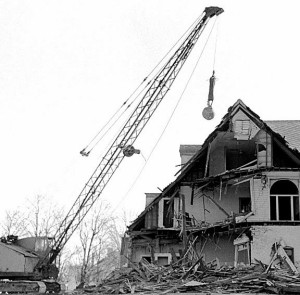
What the City plans for the Orth House and others in the Wedge and other not-good-enough neighborhoods.
“By 2030, we will have demolished and replaced nearly 1/3 of our current building stock, creating enough debris to fill 2,500 NFL stadiums. How much energy does this represent? [E]nough to power California (the 10th largest economy in the world) for 10 years. By contrast, if we rehabilitate just 10% of these buildings, we could power New York for over a year.”UrbDeZine SanFrancisco
The hypocrisy of the City regarding recycling would be laughable if it weren’t so appalling. Minneapolis needs to start practicing what it preaches. Citizens recycling cans and bottles is wasted effort if the government is not encouraging the recycling of buildings.
Don’t jive us, City of Minneapolis. Be a Zero Hero and affirm your alleged commitment to Zero Waste. Allow the historic Orth House to be recycled. The Greenest Building is the one standing.
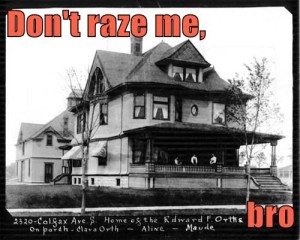
Developers repeatedly trot out claims based on the tenets of New Urbanism: affordability, diversity, easy access, and sustainability. For example, as seen in the previous post, the Lander Group’s promotion of its 2320 Colfax project as “affordable” is not credible, given the rents required for units in new Wedge buildings. However, the Lander Group’s bogus claim of affordability is not the most egregious subversion of New Urbanist principles. A much more serious misrepresentation resides in the statement that this building will consist of “‘Eco-Flats – promoting ‘Green-Living’. . .close to and providing a variety of transportation options, services, recreation, and green space.”
What does this mean? Not that the building is green, but that the living in it will be green. How will this be green? By the developer putting in fewer parking spaces than will be needed for 45 units, providing an HourCar, a “variety of bike storage options”, and a bike-repair stand. First of all, the assumption that the majority of tenants won’t own cars is ridiculous. That’s an ideal of New Urbanist planning that is far from being realized. 80% of American adults own at least one car. If the project has the Wedge average of 1 1/2 tenants per unit, the complex could be short of parking by 34 spaces. Many workplaces are simply not accessible by public transportation, and many people who bike to work often suspend bike commuting during the winter. Second, the amenities available nearby (bus routes, bike paths, HourCar, parks, nearby shops and restaurants) are already there, and will be there, Lander project or not.
Using the prefix “Eco-” as a descriptor is a marketing ploy to suggest that this project will be good for the environment–which it most decidedly will not be. Wrecking the houses at 2320 and 2316 will cost the developer about $60k–to be added to construction costs–and would involve removing 250+ tons of building materials, excluding the foundations, to the landfill. Historic preservation is environmental preservation. According to the World Bank, “sustainable development recognizes that growth must be both inclusive and environmentally sound to reduce poverty and build shared prosperity for today’s population and to continue to meet the needs of future generations. It must be efficient with resources and carefully planned to deliver both immediate and long-term benefits for people, planet, and prosperity.”[1] The proposed Lander development at 2320 Colfax is decidedly inefficient in its use of resources. Ironically using the rhetoric of ‘green living,’ the developer seeks to destroy the Orth House and replace it with new construction–the least environmentally responsible option available.
Article after article about conservation reiterates the point that “green building” is an oxymoron. You can’t have both. As Jerri Holan, a Fulbright scholar and member of the AIA, points out: “The facts are in – no matter how much green technology is employed, any new building represents a new impact on the environment.It makes no sense for us to recycle newspapers, bottles, and cans while we’re throwing away entire buildings and neighborhoods.It’s fiscally irresponsible and entirely unsustainable.” [2]
The Minneapolis Heritage Preservation and City Council have determined the Orth House to be an “historic resource.” Razing historic buildings results in a triple hit on scarce resources. First, we are throwing away thousands of dollars of embodied energy. The greenest thing we can do is to continue the life of a building whose resources have already been extracted from our planet. Using data from the Advisory Council on Historic Preservation, we can calculate that the Orth House, at 6,400 square feet, embodies roughly 9.6 billion BTUS of energy, equal to 77,000 gallons of gasoline. If that building is torn down, all that embodied energy is wasted. What’s more, the demolition process itself consumes energy.[3]
The Lander website claims that their project would use “better construction techniques.” Hmm–better construction than what? Certainly not better than the house currently standing at 2320, which was built by T.P.Healy in 1893 of lumber from Minnesota’s virgin forests. The historic Orth House would be replaced with materials vastly more consumptive of energy. What is the Orth House built from? Timber, plaster, limestone, and bricks. These are the least energy consumptive of materials. The major components of new buildings, by contrast, are the most energy consumptive–plastic, steel, vinyl and aluminum.
An important part of New Urbanist strategy is the preservation of existing buildings and historic architecture. The reasons for this are twofold: historic preservation not only saves “places that matter” for future generations, but conserves rapidly dwindling natural resources and energy sources. The fact that the Lander project is a larger building than the Orth House does not offset the energy consumed in destroying the old one and building the new. Even if this building were LEEDS (Leadership in Energy and Environmental Design)-certified[4] and built on an empty lot (which it is not), it would take many decades to offset the loss of resources. “By 2030, we will have demolished and replaced nearly 1/3 of our current building stock, creating enough debris to fill 2,500 NFL stadiums. How much energy does this represent? [E]nough to power California (the 10th largest economy in the world) for 10 years. By contrast, if we rehabilitate just 10% of these buildings, we could power New York for over a year.”[5]
New building can never be greener than existing structures, yet Minneapolis keeps saying it espouses sustainability while demolishing dozens of buildings annually. At the root of the problem is the functional life of new buildings. Contemporary buildings are considered to be disposable even as they go up. Take, for example, the Metrodome and the 1981 Walker Community Library building. These structures stood on sites cleared of older buildings for their construction. Only three decades years later, they both were demolished, sending thousands of tons of building materials to landfills. Meanwhile, across the street from the third Walker library, the first 1911 Classical Revival library building still stands, adaptively reused as commercial space.
New Urbanism is a comprehensive philosophy of urban planning. But so far, Minneapolis has been dealing with demolition on a case-by-case basis. An owner wants to wreck an historic resource: staff representing City Planning say, sure, wreck away. . .There are better examples of Healy’s work. This process of finding better examples of this and that can go on until there is literally one Healy house left standing. Lander’s development could have a suitable place in Minneapolis, but not on the site of the Orth House. If 2320-2316 were vacant lots, the Lander project would have already been built. Minneapolis should not be curating a museum, but maintaining community character and identity.
Minneapolis must develop a policy dealing with demolitions that takes into account both historical and ecological resources. Marketing buzz words should not be a substitute for responsible urban stewardship.
“Our duty is to preserve what the past has had to say for itself, and to say for ourselves what shall be true for the future.”–John Ruskin
–T.B
C.A.C.
In promoting their new projects, developers repeatedly trot out claims based on the tenets of New Urbanism: affordability, diversity, easy access, and sustainability.
“New Urbanism promotes the creation and restoration of diverse, walkable, compact, vibrant, mixed-use communities composed of the same components as conventional development, but assembled in a more integrated fashion, in the form of complete communities. These contain housing, work places, shops, entertainment, schools, parks, and civic facilities essential to the daily lives of the residents, all within easy walking distance of each other.”–NewUrbanism.org

Want to live in hip, starry-neon-skied Lime in the Wedge Greenway, where (as their sign proclaims) “tarts” are welcome? Prepare to shell out big bucks for a small space.
Let’s look at the claims of the Lander Group for its proposal at 2316-2320 Colfax Avenue South and see how they square with the aims noted above. Lander wants to wreck the Orth House at 2320 to clear the site for a 45-unit apartment building. The Lander website says that the 2320 project is “geared to more affordable budgets with the smaller sizing, and real transportation options.” To be cost-effective for the developer, the rents in new units need to be set at least at market rate. Currently, rents for 500-square-foot studios in new Wedge buildings start at $1200 per month. This is not “affordable” housing by any stretch of the imagination. Even if Lander/At Home do as stated keep the rent under $1,000 to start with (still above average for the area), there’s nothing to stop them from raising it afterward. This is exactly what happened at the joint Lander-Gerberding apartment project at 46th and 46th. They were initially advertised as market rate [1], but now are luxury [2]. If the developer is serious about affordability, let him sign a contract with the City for a fixed-rent range.
The fact is that the older rental units are the affordable ones. New apartment construction, to be cost effective for the developer, must have rents set higher than for existing structures. The result is what we now have in the Wedge Greenway: 1800+ units built or under construction that are inhabited largely by young, affluent white people. The aim of the marketing campaigns for these Greenway apartments is to attract young suburbanites to the city for a few years before they settle down in neighborhoods of mostly single-family homes: “Don’t get hitched until you enjoy your year at Lime”, “I don’t remember her name, but her apartment” (Elan). This kind of marketing and pricing does not produce a racially, socially or economically diverse community, but an enclave of privileged “urban tourists,” slumming in the Wedge for a few years. So much for developers adhering to the “diversity” and “affordable” parts of New Urbanist planning.
The Lander website touts “real transportation options” (as opposed to imagined options?) available to future tenants. “The building concept promotes ‘green’ living – close to and providing a variety of transportation options, services, recreation, and green space.” Lander’s “concept” has not produced these amenities, which are available to anyone living in the area. Bus lines run on Hennepin, Lyndale, and Franklin right now.The Wedge has always been a very walkable part of the city, close to lakes, parks, and shopping. Minneapolis is currently the most bike-friendly city in the country. Hour Cars are available now at Franklin and Dupont, a short walk away; bike racks can be built into any structure.

In addition, the developer and development supporters totally ignore New Urbanism’s mandate to conserve resources: to lift people out of poverty, to use energy wisely, and to build community. An important part of this mandate is to preserve the cultural resources and history of the community–an aspect developers conveniently forget, and in fact, as is obvious in the case of 2320 Colfax, scorn.
“Regional architectural styles, historic preservation and shared public space are also crucial.”—Charter for the New Urbanism
This is what the idealized sketch of the proposed Lander building looks like:

Architectural drawings are often out of context, a building surrounded by sky and trees (and sometimes a flock of birds). This building could go just about anywhere, a ho-hum block of flats that is hyped as “affordable” and “sustainable”–but isn’t. (See post on “Greenwashing Demolition). Imagine instead an adaptive reuse of the Orth House, designed to fit in with new residential construction on the site, a multiple-unit complex that would not require sending 250+ tons of building materials to the landfill.

“Cities grow, evolve and combining the new with the old in the same area will acknowledge the history of the place. Projects that pay homage to the existing fabric of a space, but also incorporate new architecture would be my ideal.”–Martina Ernst, Wo-Built Inc. – Innovative Design and Build, Toronto
The Lander proposal is designed with one primary goal: to maximize profits for the developer, with no regard for the neighbors or neighborhood. Let’s not forget that the Lander project did not win approval by the LHENA neighborhood board.
Lander, the property owner, and their for-hire expert contend that the Orth House does not have structural integrity. But don’t just take the word of people who will make hundreds of thousands of dollars from its demolition. John Jepsen of Jepsen Structural Services, a company specializing in structural shoring, lifting and straightening, has examined 2320 Colfax. Last year he testified before the City Council that the house is structurally sound, “built of old growth timber, straight and true.”
The owner and the broker who engineered the deal with Lander also contend that it would economically unfeasible to rehab the house. Again, are we to simply take the word of those who will reap substantial financial gain from its demolition? Those who have been inside the house, like myself, have found that many of the original features remain on the first floor and on the exterior.The upper floors were redone after a fire, but this provides interesting options for redesign.
A redevelopment that would include the Orth House would be the green, sustainable, affordable option, a reuse that would be sensitive to community concerns, city history, and fit in with existing buildings in the North Wedge.
Reuse. Reinvest. Retrofit. Respect.
–T.B.

